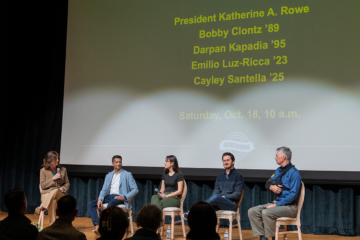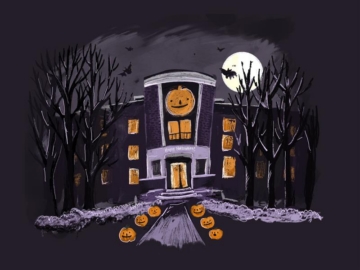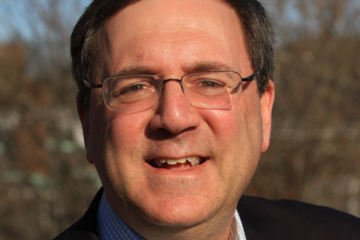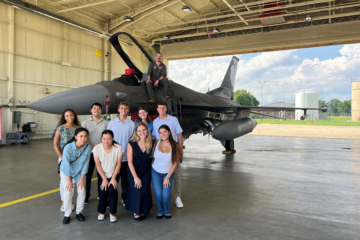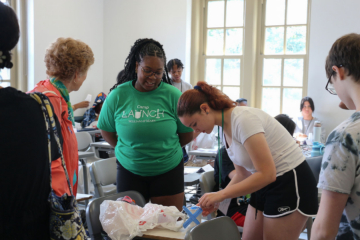‘Responsible stewardship’: How William & Mary shapes conservation around the globe
William & Mary’s Presidential Conversation during Homecoming & Reunion Weekend brought together alumni leaders to discuss solutions for healing the planet while helping humans thrive.
To honor the Year of the Environment, the conversation centered on pressing issues in conservation and sustainability. Alumni, staff, faculty and friends gathered in the Sadler Center on Oct. 18 for this signature part of the weekend.
“Responsible stewardship of our planet’s resources is the defining challenge of this generation,” said President Katherine A. Rowe. “We need scientifically sophisticated policymakers and policy-savvy scientists to conserve our coasts, forests, energy systems and ecosystems.”
That call for interdisciplinary thinking resonated through the stories of panelists Bobby Clontz ’89, Darpan Kapadia ’95, Emilio Luz-Ricca ’23 and Cayley Santella ’25. Their efforts in wildfire resilience, sustainable energy, biodiversity data science and ecosystem restoration illustrated how progress for people and the planet can go hand in hand.
Restoring ecosystems & protecting people
Through his work as statewide fire manager and longleaf pine specialist at The Nature Conservancy, Clontz exemplifies the spirit of W&M’s ampersand. By restoring forest ecosystems, Clontz and his colleagues protect wildlife and reduce wildfire risks with synergistic benefits for plants, animals and people.
“A number of species need more open forest structure (to thrive),” he said. “And they need controlled fires to maintain that structure and improve the germination of native plants in the understory.”
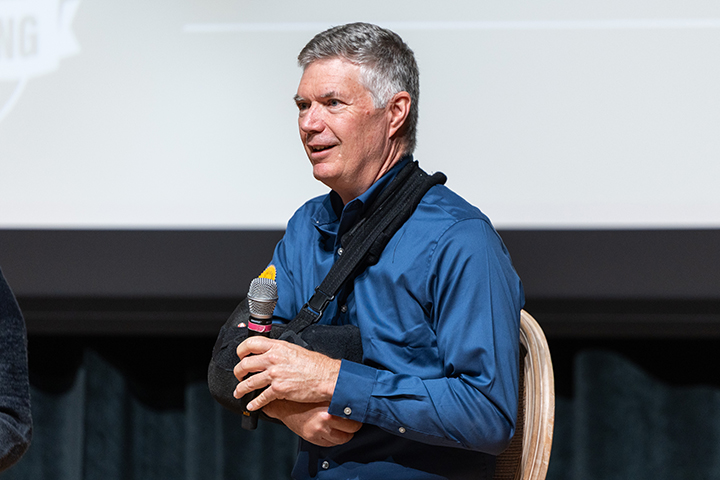
One example is the red-cockaded woodpecker, a keystone species vital to its ecosystem. Efforts to restore its habitat — by thinning overcrowded forests and reintroducing prescribed fire — have brought it back from the brink of extinction. Its recovery has had far-reaching effects.
“If you can imagine a dense forest with a wetland inside it, all of those trees are essentially straws drawing water out of the ground,” said Clontz. “These ephemeral wetlands no longer sustain surface water long enough for amphibians to breed. … But through our restoration efforts for the red-cockaded woodpecker, the forest opens up, allowing more water to stay on the landscape and giving amphibians what they need to breed.”
It turns out that helping amphibians and birds also benefits people. By clearing the forest of tinder-like underbrush, forest managers can decrease the intensity and spread of wildfires.
The success of Clontz and his collaborators in Virginia has inspired change beyond the state.
“(Our work) has changed policy around fire management, policy around smoke management and now we’re working on liability reform,” he said.
Making energy sustainable & profitable
Kapadia, chair of the W&M Foundation and chief operating officer at LS Power, is tackling one of the 21st century’s defining challenges: the large-scale transition to sustainable energy. He discussed what it will take to build an energy system that is both sustainable and profitable.
“We need to transition while maintaining reliability, security and affordability,” said Kapadia. “I think if you compromise any one of those pillars, you lose the support of the people and policymakers.”
With the rise of artificial intelligence, an increase in data centers, the return of manufacturing to the U.S. and the shift toward electrification, energy demand is at an all-time high, he noted — which only intensifies the energy transition challenge.
But Kapadia sees it as an opportunity. At LS Power, he’s demonstrating what the future of energy can look like. By commercializing innovative technologies like electric vehicle charging and battery energy storage, the company is proving that sustainable solutions can also drive market growth, he said.
Balancing data science & fieldwork
Entering W&M, Luz-Ricca was interested in data science and math — he hadn’t taken a biology class since ninth grade. But an encounter with the Institute for Integrative Conservation (IIC), where he used satellite imagery and AI to track sandhill crane populations, sparked his passion for applied research and biodiversity conservation.
Now a Ph.D. student at the University of Oxford’s zoology department, Luz-Ricca hopes the trend of injecting new technologies like machine learning into conservation work will continue. However, he emphasized the need for boots-on-the-ground work to complement and strengthen scientists’ confidence in such tools.
As an environmental consultant for Geosyntec Consultants, Santella does that type of hands-on work. She spends much of her time knee-deep in rivers and streams, identifying and mapping the boundaries of wetlands.
Santella’s career was also inspired by a project with the IIC. Working with wildlife biologists from the Virginia Department of Wildlife Resources, she investigated the factors influencing wildlife-vehicle collisions in Northern Virginia.
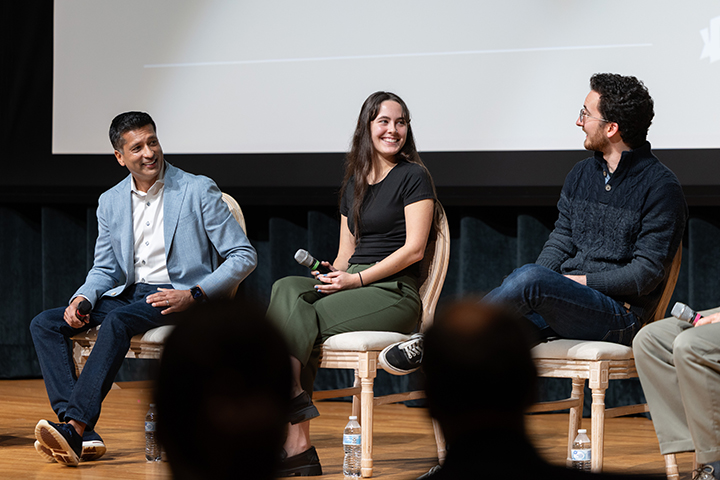
Answering a question from Rowe about how students hoping to pursue careers in environmental science can “stick the landing,” she encouraged them to take advantage of the university’s many applied learning resources.
“There are so many opportunities at William & Mary to take part in hands-on projects and make a real impact on conservation challenges,” she said. “Those experiences help you understand what it truly takes to work in this field — the time, effort and persistence.”
A time-tested model
Answering questions from the audience, panelists highlighted the power of a liberal arts and sciences education grounded in applied learning.
“Pure analytical capability will get commoditized, but what won’t be is the ability to think, to solve problems, to exercise judgment, to have ethics,” said Kapadia. “And that’s what we teach here (at William & Mary).”
Luz-Ricco thanked William & Mary for giving him the skills to navigate novel scenarios with confidence.
“I might not understand how something works, but I have a good sense of what I need to do to build that understanding, who to talk to, what to read,” he said. “It’s cool that I learned that skill during undergrad by doing research.”
Underscoring those statements, Rowe stated her definition of academic excellence: enabling learners “to work at the edge of knowledge all the time.”
“This type of learning will spark the changes that will shape communities, ecosystems, economies and so many parts of our lives for the next 50 years,” she said.
Read more about Clontz, Kapadia, Luz-Ricca and Santella in the William & Mary Alumni Magazine.
Watch Kapadia’s 2025 Convocation speech and learn how he’s helping to attract the best and brightest to W&M.
Latest W&M News
- Spooky artifacts haunt Swem Library Special Collections for HalloweenThe Special Collections Research Center will be packed on Oct. 30 with Halloween-themed items dating as far back as the 18th century.
- Journalist, author David Sanger selected as W&M’s Hunter B. Andrews FellowAward-winning journalist and author David E. Sanger will visit William & Mary in November as the university’s 2025 Hunter B. Andrews Fellow.
- Making medical images make senseWilliam & Mary Math Professor GuanNan Wang evaluates the accuracy of medical images generated by artificial intelligence.
- The summer of cyber: W&M students gain real-world experience in cybersecurityWilliam & Mary students had a number of opportunities this summer to make contributions to the nation's cyber capabilities.
- Coping with a painful childhoodInternational study shows college students who experienced family dysfunction as children sometimes turn to alcohol to cope with the long-term impacts.
- W&M’s Center for Gifted Education expands pre-collegiate summer campsOfferings strengthen access and year-round support for Virginia students.



